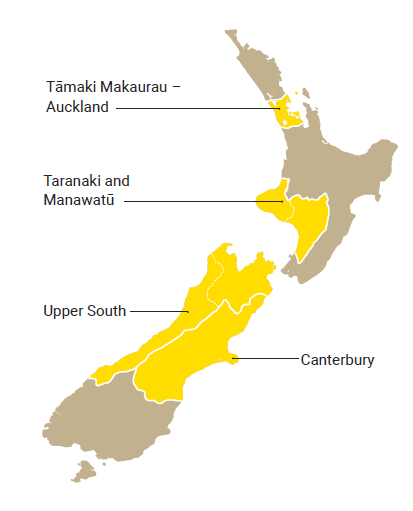Our approach
This section explains our approach to reporting agency compliance with the National Care Standards and Related Matters Regulations
(NCS Regulations).
The Oversight of Oranga Tamariki System Act 2022 (the Oversight Act) requires us to report annually on compliance with the for and in care. We do this through our annual Experiences of Care in report.
This year’s report closely follows the structure of the NCS Regulations. This is different from our first three-yearly cycle of reports, which were structured around our outcomes framework1. Aligning our report with the NCS Regulations makes it very clear to agencies what actions they need to take to improve compliance. Like our previous reports, this report shines a light on the experiences of tamariki and rangatahi in care, and the impacts that compliance and non-compliance with the regulations has on them.
Compliance with the regulations directly impacts the experiences and outcomes of , , , and caregivers. For this reason, their voices are central to our report and are highlighted in the use of quotes throughout the text.
Sometimes we use a quote to highlight an example of good practice in an area where the experience is primarily negative. Learning from these areas of good practice helps drive improvement.
We also start each part of our report with a summary of the themes from our analysis of that part of the regulations, written from the perspective of Tamariki and rangatahi.
This report identifies community initiatives that were working well for , and . This is the first time we have named and spotlighted initiatives in our reports. We have done this where there are opportunities for other communities to learn from an approach.
While this year’s report has a different structure to previous years, our approach to collecting and analysing the data and information remains the same.
Our monitoring approach is based on a rigorous methodology with evidence at the centre. We use a mixed-methods approach – collecting qualitative information from the communities we visit and gathering quantitative data from agencies we monitor.
Analysis of the qualitative information enables us to validate and triangulate the quantitative data. It tells us about the quality of , , and experiences from their own perspectives and helps us identify areas of good practice and areas for improvement. We also receive information on agencies’ policies, strategies, funding and recruitment, and updates on the commitments agencies have made in response to our previous reports. Further information about how we collect and analyse data is available on our website2.
We visit communities on a three-yearly cycle to ensure we get a range of regional perspectives and cover the motu (country) every three years. In the 12 months to 30 June 2024, we spoke with around 1,800 people about their experiences.
| & | 200 |
| 70 | |
| Whānau and non-whānau caregivers | 120 |
| Oranga Tamariki kaimahi | 550 |
| Open Home Foundation kaimahi | 45 |
| /Māori social service providers kaimahi | 160 |
| Non-government organisations kaimahi | 230 |
| Government agencies kaimahi | 430 |

For this 2023/24 reporting period, we visited the following communities:
Where agencies we monitor have committed to actions in response to our previous Experiences of Care reports, we follow up to ask those agencies how those commitments are progressing. Relevant information on previous commitments in response to our reports is included in the body of our report. Full details of agency commitments including how those are progressing and what actions have been completed, is available on our website aroturuki.govt.nz/reports/ agency-responses.
Data was requested from Oranga Tamariki and Open Home Foundation measuring compliance with each of the . We analyse these measures to understand how compliance has changed over time, and where there is greatest need for improvement. We have included these measures in this report where they are relevant to our overall findings. Compliance tables containing the full set of measures provided in response to our request can be found on our website3.
We did not request data from Barnardos and Kōkiri Marae Keriana Olsen Trust because of the small number of and in their care. Instead, we asked them to a provide a narrative response to how the NCS Regulations were being met.